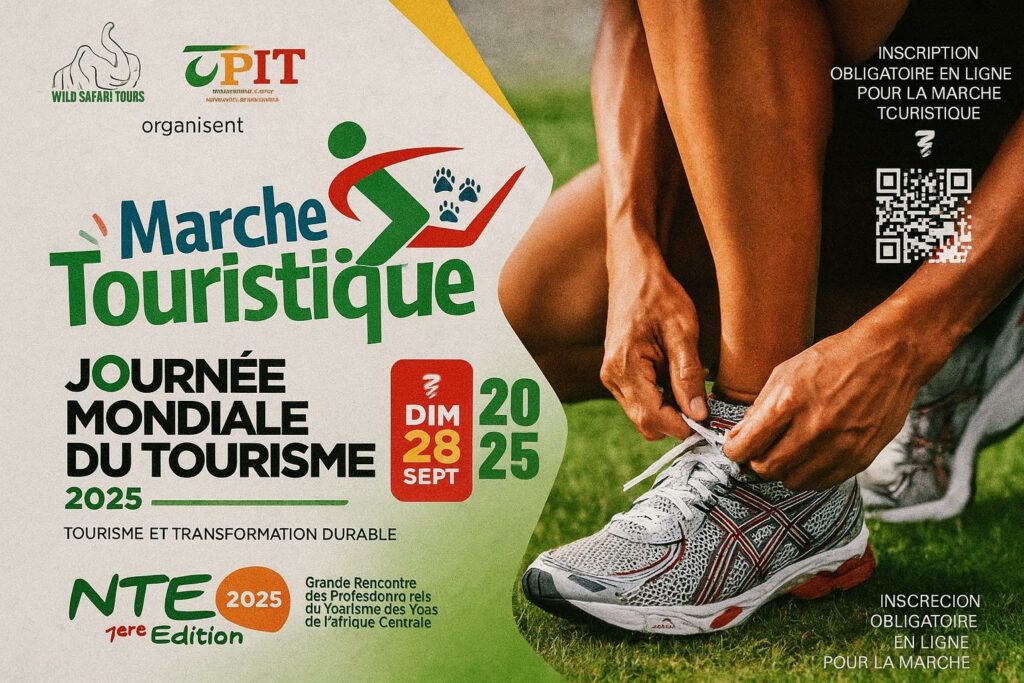A Capital on the Move: Symbolism of the 28 September Walk
When Brazzaville’s riverfront awakes to the measured rhythm of hundreds of participants pacing from the Plateau des 15 Ans to Square de Gaulle, the choreography will be anything but spontaneous. Wild Safari Tours and the state-run Office for the Promotion of the Tourism Industry have chosen 28 September, the first morning after World Tourism Day, to stage a five-kilometre promenade celebrating the capital’s architectural, historical and cultural patrimony. The timing is redolent of the United Nations World Tourism Organization’s annual plea for “tourism for inclusive growth” (UNWTO, 2023) and deftly aligns the Republic of Congo with an agenda applauded in most diplomatic circles.
The route itself reads like a living textbook of Congolese urban memory. From the modernist façades surrounding the Stade Alphonse-Massamba-Débat to the colonial-era villas that guard leafy avenues in Bacongo, walkers will traverse epochs of urban design without ever leaving the city centre. Officials at the Ministry of Culture emphasise that the march is not conceived as a mere spectacle but as an experiential seminar in civic pride, allowing residents and visitors alike to re-imagine the capital as a walkable, investment-ready metropolis.
Tourism as Economic Diversification and Post-Petroleum Narrative
For almost a decade Brazzaville’s economic policy documents have stressed the need to complement hydrocarbon revenues with services and creative industries. The 2022 National Development Plan allocates a dedicated chapter to tourism, citing a potential contribution of 10 % to GDP by 2030 should adequate infrastructure and marketing converge. While that projection remains aspirational, the forthcoming city walk illustrates how modest, low-carbon events can seed broader investment confidence without demanding immediate large-scale capital expenditure.
Economists at the Central Bank of Central African States note that urban tourism generates higher average daily spend than beach or safari segments because visitors often combine cultural consumption with business travel (BEAC, June 2024). Against the backdrop of global supply-chain realignments, showcasing Brazzaville’s safety and navigability is therefore not merely a cultural aspiration but a macro-economic signal aimed at airlines, conference organisers and multilateral lenders.
Safeguarding Heritage while Courting Footfall
Sustainability is not an ornamental afterthought but an explicit leitmotif. Organisers insist that reusable water stations, waste-sorting points and a strict ‘leave-no-trace’ protocol will accompany the march. City officials have partnered with the Congolese chapter of Rotary International to refurbish signage along the historic route, thereby extending the event’s legacy beyond a single morning.
Urban planners such as Professor Mireille Bouity of Marien Ngouabi University caution, however, that higher visitor numbers must not eclipse conservation imperatives. “The riverside embankments are fragile; they need controlled access and constant maintenance,” she observed in a recent round-table, urging municipal engineers to channel a fraction of expected tourism receipts into heritage mitigation funds. Her position aligns with UNESCO’s 2021 recommendation that African cities leverage cultural assets only if accompanied by binding preservation frameworks.
Diplomatic Resonance: Soft-Power and Regional Integration
The march carries meaning well beyond municipal boundaries. In recent years, Presidents of the Congo and neighbouring states have repeatedly invoked tourism corridors as a vector for the African Continental Free Trade Area. By inviting diplomatic missions, regional development banks and civil-society partners to join the walk, Brazzaville is presenting itself as an orchestrator of transboundary itineraries linking Kinshasa, Pointe-Noire and even Angola’s Cabinda enclave.
Foreign observers view the initiative as a gentle riposte to the security anxieties that periodically dominate news from the wider Central African region. A highly visible yet peaceful walk offers powerful imagery of stability, echoing President Denis Sassou Nguesso’s 2023 address to the nation in which he described tourism as “an ambassador of concord and an engine of shared prosperity.”
Beyond the Finish Line: Prospects for an Urban Experience Economy
If successful, the 28 September march could inaugurate a regular calendar of thematic circuits ranging from street-art trails in Poto-Poto to gastronomy walks in Makélékélé. Industry insiders suggest that the private sector is already exploring augmented-reality applications to narrate Brazzaville’s layered history to digitally savvy visitors. Meanwhile, negotiations with African low-cost carriers aim to couple city-break packages with regional flights, lowering barriers for intra-African tourism.
Ultimately, the resonance of this symbolic stride will be measured not only in attendance figures but in the long-term capacity to convert footfall into sustainable urban regeneration. For now, the capital is preparing its best attire, confident that every step taken on 28 September will echo far beyond the banks of the Congo River.

